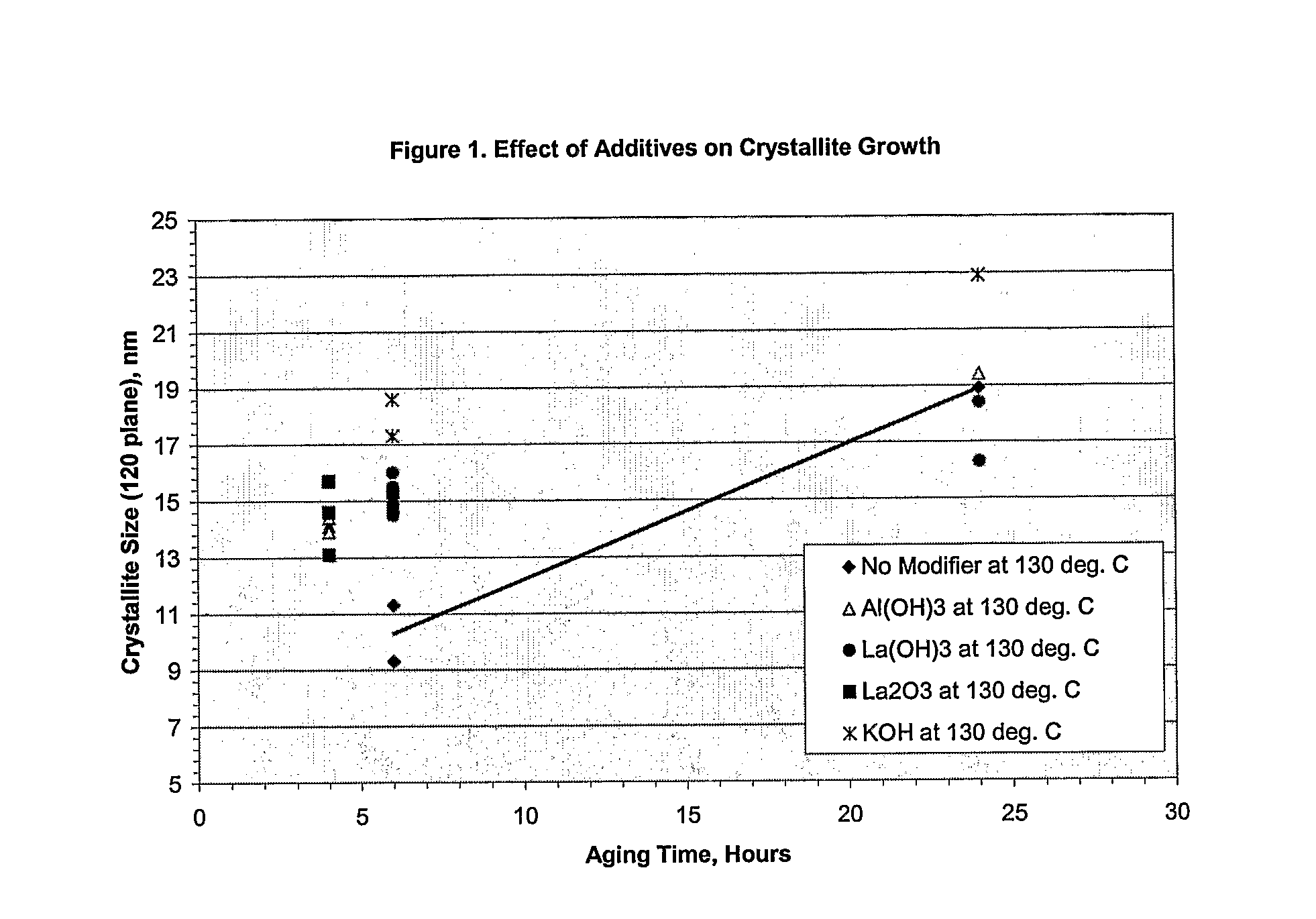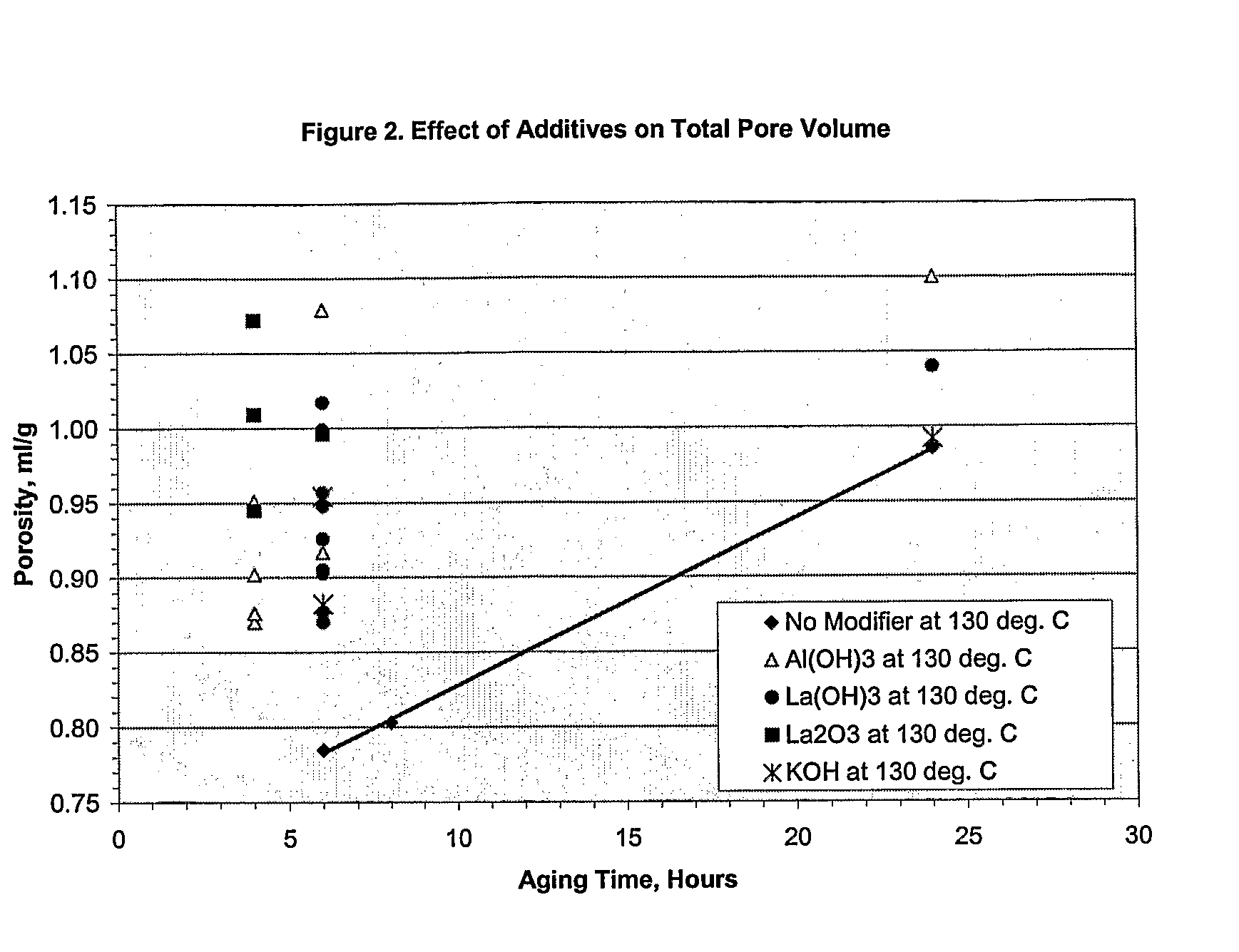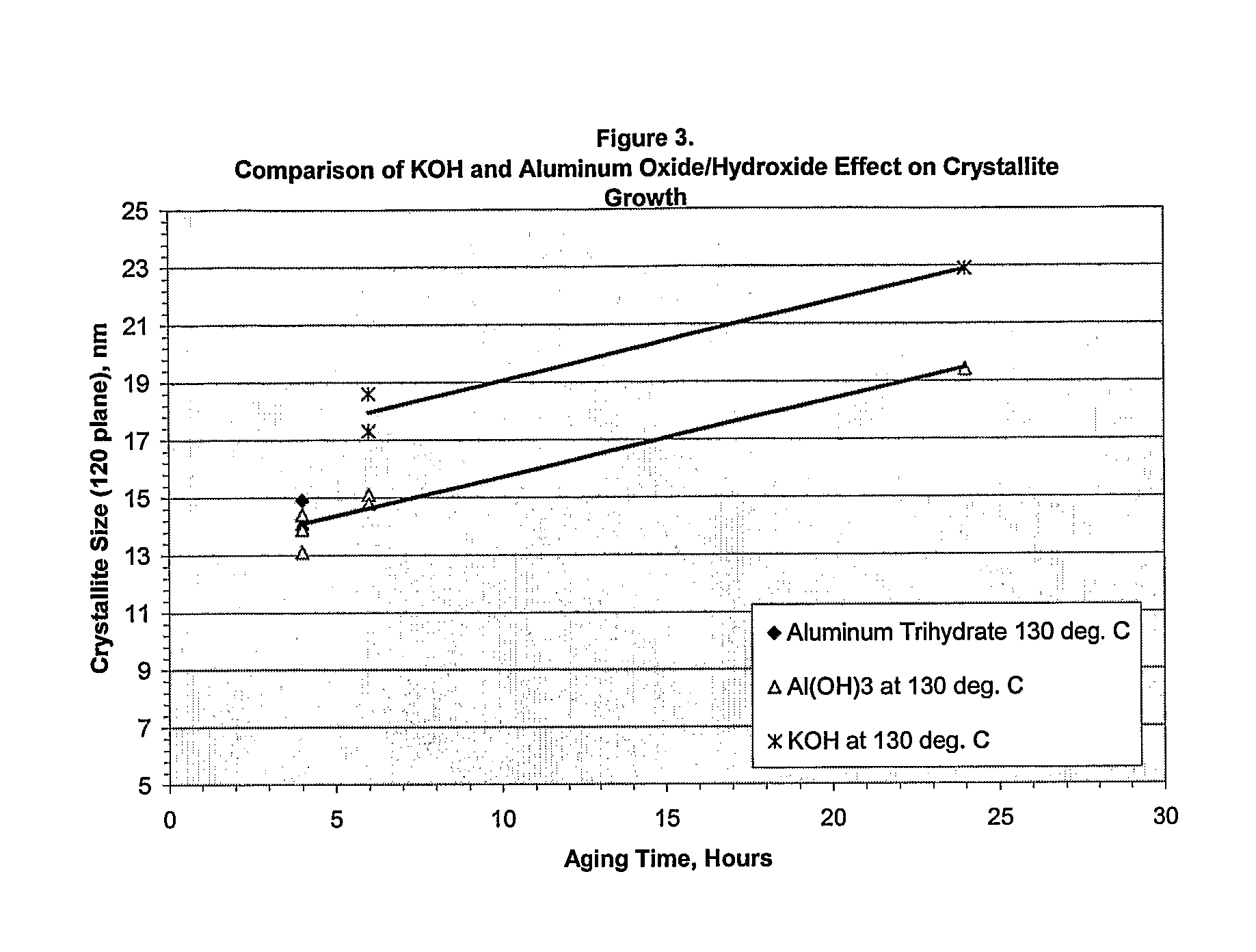Process for Producing High Porosity Boehmite Aluminas
- Summary
- Abstract
- Description
- Claims
- Application Information
AI Technical Summary
Benefits of technology
Problems solved by technology
Method used
Image
Examples
example 1
[0031]A series of runs were made on various aqueous alumina slurries where no modifier, soluble or insoluble, was employed in the hydrothermal aging. The aqueous alumina slurries contained 12 wt. % boehmite alumina produced from the hydrolysis of aluminum alkoxides. In all cases, the hydrothermal aging was conducted with stirring at an effective consumptive power of 8.3 kW / m3 (agitator speed of 600 rpm). The reactor employed was a 5 gallon, laboratory reactor, and was operated in a batch mode although the process can be conducted in a continuous mode if desired. The results are shown in Table 1 below:
TABLE 1CrystalliteCalcined atCalcined atAgingAgitatorSize1200° C. / 4 hrs1200° C. / 24 hrsTimeTempSpeedSurfacePoreAngstromsSAPVSAPVTesthoursModifier° C.rpmArea m2 / gVolume ml / g020120m2 / gml / gm2 / gml / gA6None906002310.7858081B8None906002300.8037679C24None906002060.985117107D6None1306001830.63178111390.25880.193D6None1306002170.61455989450.242240.181F24None1306001341.031184179700.849600.695
example 2
[0032]The procedure of Example 1 was followed with the exception that various water soluble as well as water insoluble modifiers of the present invention were employed. The results are shown in Table 2 below:
TABLE 2CrystalliteAgingSizeSurfacePoreTestTimeWt. %Water Solubility ofTemp.AngstromsAreaVolumeIDhoursModifierModifierModifier° C.020120m2 / gml / g1245.0SolubleAmmonium Carbonate1301681561511.129265.0SolubleAmmonium Carbonate130991221800.842365.0SolubleAmmonium Hydroxide1301751811400.963461.0SolubleCesium Hydroxide1301291441540.950561.0SolublePotassium Hydroxide1302021831411.0406242.5SolublePotassium Hydroxide1303322291240.992762.5SolublePotassium Hydroxide1302281731380.882865.0SolublePotassium Hydroxide1302581861230.954961.0SolubleRubidium Hydroxide1301231461590.9451061.0SolubleSodium Hydroxide1302131751411.0401162.5SolubleSodium Hydroxide1302632241100.9291265.0SolubleSodium Hydroxide1302511971140.9361365.0Partially SolubleCalcium Hydroxide130641051980.7141461.0Partially SolubleLit...
example 3
[0040]This example demonstrates the effect on pH of adding water soluble hydroxide and the modifiers of the present invention to alumina slurries that are to be hydrothermally treated. In all cases, the additives were added at a 1% wt. level. The results are shown in Table 3 below:
TABLE 3AdditiveSlurry pHSlurry with no Additive9.38KOH11.97Al(OH)3 commercial grade8.70Crystalline Aluminum9.35TrihydrateLanthanum Oxide9.33Tin (IV) Oxide9.35Ammonium Hydroxide10.73Slurry with no Additive9.53Al(OH)3 laboratory grade9.20
[0041]As can be seen from the data in Table 3, the addition of water soluble hydroxides such as potassium hydroxide or ammonium hydroxide, has a dramatic effect on the slurry pH. This is to be compared with the use of the additives of the present invention which essentially have no effect on pH. Although Table 3 does show that the addition of aluminum hydroxide does lower the pH by about 0.3 to 0.6 units, it is to be understood that aluminum hydroxide which contains aluminum...
PUM
 Login to View More
Login to View More Abstract
Description
Claims
Application Information
 Login to View More
Login to View More - R&D
- Intellectual Property
- Life Sciences
- Materials
- Tech Scout
- Unparalleled Data Quality
- Higher Quality Content
- 60% Fewer Hallucinations
Browse by: Latest US Patents, China's latest patents, Technical Efficacy Thesaurus, Application Domain, Technology Topic, Popular Technical Reports.
© 2025 PatSnap. All rights reserved.Legal|Privacy policy|Modern Slavery Act Transparency Statement|Sitemap|About US| Contact US: help@patsnap.com



